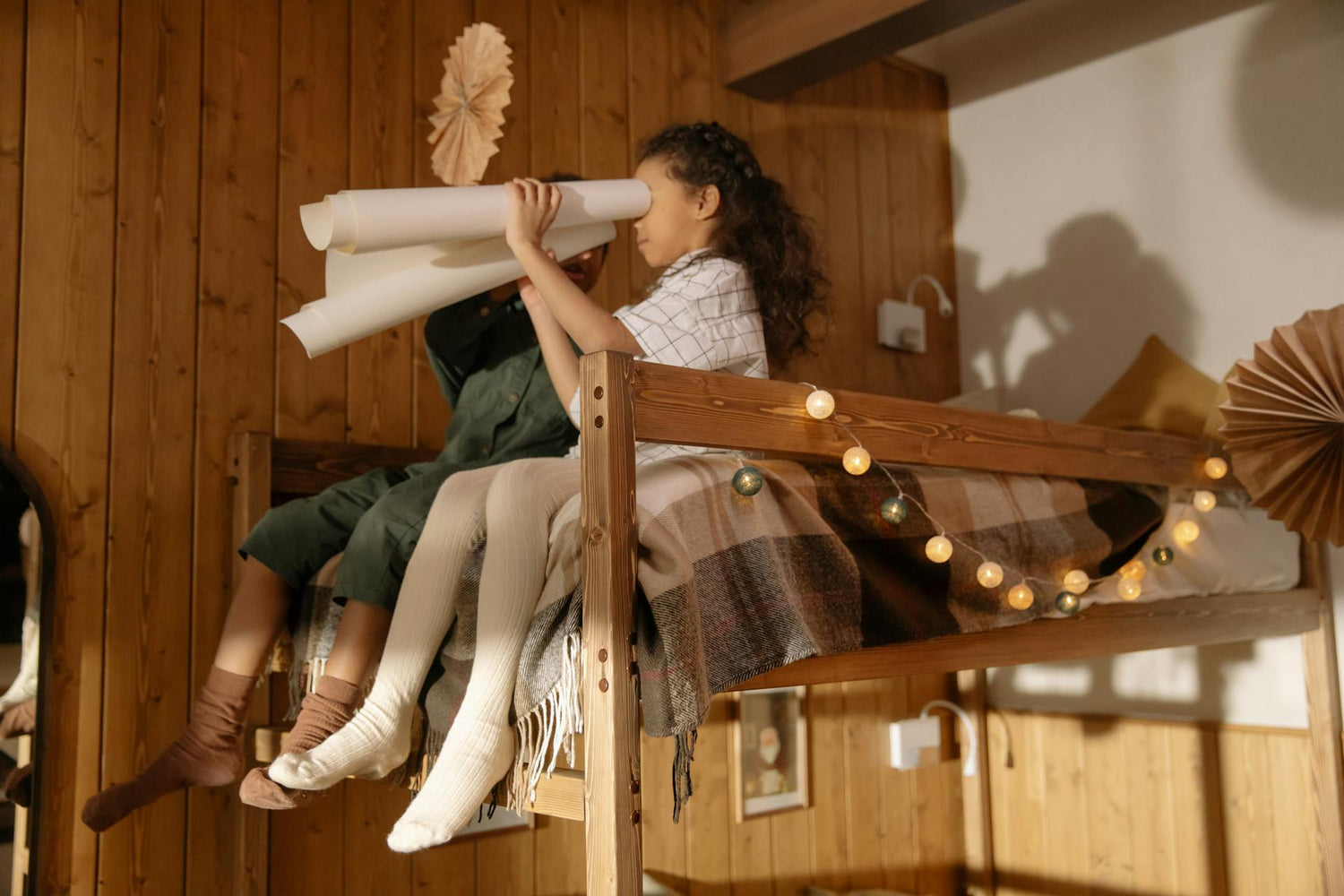Introduction:
So, the time has come to upgrade your little one's sleeping quarters. Maybe they've outgrown the cot, or the novelty of them sharing your bed has worn off a little. Whatever the reason, choosing the right bed for your child will likely involve thoughts of safety, practicality and a splash of creativity.
Factors to Consider when Choosing a Child's Bed
Safety & Suitability
Needless to say, safety is paramount when it comes to children and choosing the best bed for a growing child requires some thought.
Considerations such as their age and physical abilities, obstacles in the room that may hinder access along with any mattresses depth restrictions and weight limits that apply to the bed, to name a few. Making sure the bed is assembled correctly with joints secured and regularly checked for tightness will go a long way towards preserving the life span of the bed. There are lots of amazing children's beds available that comply with the necessary product safety standards, however, giving careful consideration to whether a bed is suitable for your child will also help to keep them safe.
Age Matters & So Does Size
Children's beds generally display a minimum age guide but it is just that - a guide. Children develop at different rates, so it is important to consider both the age and development stage of your child when deciding which style of bed is most suitable.
Children will generally transition from a cot to a toddler bed or similar from around 18 months to 4 years old and this is typically the first post-cot age range when assessing age suitability. From around the age of 4 years, slightly larger beds are considered suitable such as low sleeper beds, some cabin beds and the lower level of some bunk beds. The age of 6 years and upwards is considered to be the minimum age requirement for elevated beds such as the top level of a bunk bed, high sleepers, mid sleeper beds and other high beds that include a ladder for access. Beds chosen around this age could easily see them into their teenage years, so it's worth considering a bed that can accommodate them now and during the growth years ahead.
Available Space
When choosing any piece of furniture, will it fit should be high on your consideration list. Measure and measure again to ensure the bed will fit within the available floor space, leaving enough room for other furniture and play space where required. Consider fixed items like windows, built in cupboards and radiators along with ceiling height and the clearance required for doors to open. In addition, most beds come flat packed and will need assembly so making an allowance for building space would be wise. If bedroom space is tight, it may be worth considering a children's bed with storage built in to the design such as a mid sleeper cabin bed. Some beds allow certain features to be moved, such as moving the ladder position from one side of the bed to another, which could help adapt the bed to fit the space. Factoring this kind of flexibility in to your decision process will help you choose the right size bed first time.
Mattress Selection
A bed is only as comfortable as its mattress and a good quality children’s mattress is more likely to provide the necessary comfort and support for their growing bodies. Better quality mattresses are generally made from higher quality materials, are more breathable and tend to last longer. From a safety perspective, ensure the mattress is the right size for the bed frame and that it complies with any mattress depth restrictions where side safety rails are present.
Practical Features
These days, kid’s beds can be so much more than just a bed so it's worth considering what features are most important when deciding. There are many styles and combinations of features such as desks, draws, cupboards and wardrobes. Cabin beds with desks, novelty theme beds, children's beds with storage or maybe a dedicated gamer bed for a teenager might tick the box.
So draw up a list of the features you'd like, consider the size and shape of the space you have and choose a bed that balances this with the age and stage of your child.
In Conclusion
It’s really worth spending some time considering who the bed is for, what bedroom space you have and if there are any specific requirements such as storage or desk space. Involve your child and together, you can create a space that could make bedtime something they actually look forward to. Imagine that!
Happy Shopping
Bedsnug


